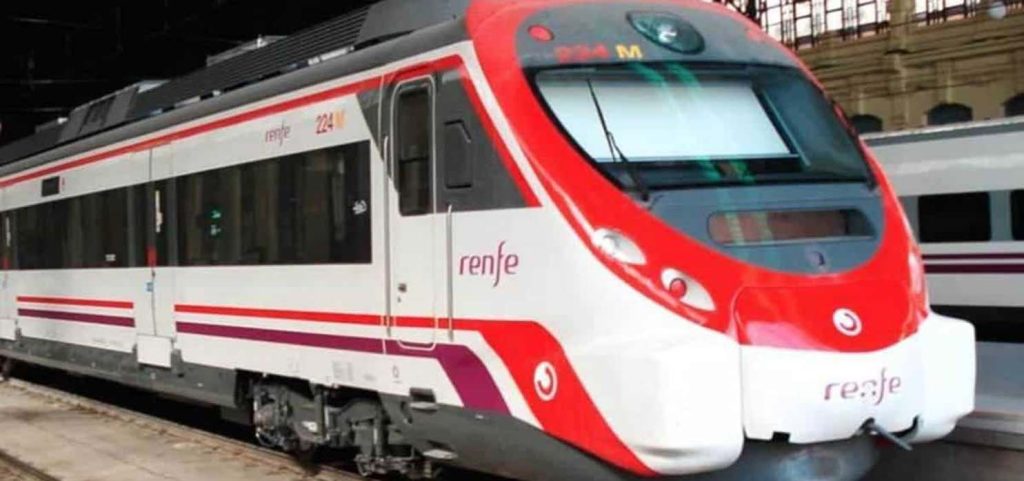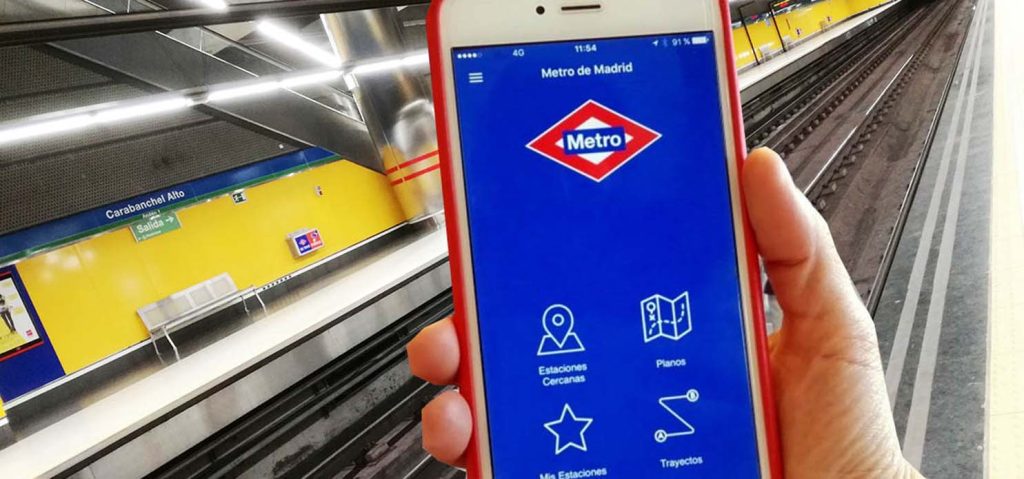Madrid, the capital of Spain, is a vibrant city full of culture, history, and culinary delights. But as with any large metropolis, getting around efficiently can make or break your trip. Thankfully, Madrid’s public transport system is modern, comprehensive, and fairly easy to navigate. From the metro to buses, trains, and even trams, there are many ways to explore the city without needing to rent a car or rely on costly taxis.
During my recent visit to Madrid, I relied entirely on public transport to get around, and it allowed me to experience the city like a local. In this guide, I’ll walk you through everything you need to know about navigating Madrid’s public transport system, including how to use the metro, buses, trains, and some insider tips that will make your journey smoother.
The Madrid Metro: Your Go-To for City Travel
The Madrid Metro is undoubtedly the fastest and most efficient way to get around the city. It covers a vast area and connects most of the major tourist attractions, making it a convenient option for visitors.
1. Overview of the Metro System
Madrid’s metro system is one of the largest in Europe, with 12 main lines and over 300 stations. Each line is numbered and color-coded, which makes it easy to identify. Key lines that visitors often use include:
- Line 1 (Light Blue): This line runs through some of Madrid’s most important spots, including Sol, Gran Vía, and Atocha.
- Line 10 (Dark Blue): One of the longest lines, connecting the northern parts of the city to key areas like Nuevos Ministerios.
- Line 8 (Pink): The airport line, which is crucial for travelers arriving or departing from Madrid-Barajas Airport.
Most metro stations are well-marked, with easy-to-follow maps. I recommend grabbing a free metro map from any station or downloading the official Madrid Metro app, which is incredibly helpful for planning routes.
2. Buying Tickets and Fares
Madrid’s metro operates on a zone system, with the majority of the city (including most tourist areas) located in Zone A. The fare for a single journey within Zone A is around €1.50 to €2.00. You can purchase tickets from machines located at all metro stations. The machines are multilingual and accept both cash and cards, so it’s easy for non-Spanish speakers to use them.
If you plan to use the metro frequently, consider buying a Tarjeta Multi card. This reusable card costs €2.50 and can be loaded with tickets, including single fares, 10-trip passes, or unlimited travel passes. I found the 10-trip pass, which costs about €12.20, to be the best value for my week-long stay. It allowed me to travel throughout the city without needing to buy a ticket for every trip.
3. Using the Metro
Navigating the metro is straightforward. Stations are clearly labeled with signs indicating the line and direction. Platforms are typically marked with the names of the end stations for each line, which helps to ensure you’re going in the right direction. Announcements on trains are made in both Spanish and English, which is helpful for tourists.
One thing I appreciated about Madrid’s metro is its punctuality. Trains usually arrive every 3-5 minutes during peak hours, and even outside rush hour, the wait time is rarely more than 10 minutes.
4. Getting to and from Madrid-Barajas Airport
One of the highlights of Madrid’s metro system is its direct connection to the airport via Line 8 (the pink line). Whether you’re arriving or departing, the metro is a fast and affordable option for getting to and from Madrid-Barajas Airport. A one-way ticket to the airport costs an additional €3 supplement on top of the regular fare. My journey from the airport to the city center took about 25 minutes, and the trains were clean and spacious, even with luggage.
Buses in Madrid: An Excellent Supplement to the Metro
While the metro is the quickest way to travel, Madrid’s extensive bus network is a great alternative, especially if you prefer to travel above ground and see more of the city as you go. Buses run frequently, and some routes even operate 24 hours a day, offering a great solution for late-night travelers.

1. Overview of the Bus System
Madrid’s buses are run by the EMT (Empresa Municipal de Transportes), and there are over 200 routes that crisscross the city. Buses are generally reliable and clean, and I found them to be less crowded than the metro, especially during rush hour. Many bus routes pass through major tourist attractions, so they’re an ideal choice for sightseeing.
2. How to Buy Tickets and Fares
Bus tickets can be purchased directly from the driver when boarding, but I found it more convenient to use the same Tarjeta Multi card that I used for the metro. A single bus fare is €1.50, but the 10-trip pass I mentioned earlier works across both buses and the metro, making it a great all-in-one solution.
One thing to note is that unlike the metro, bus drivers often do not have change for large bills, so it’s a good idea to carry smaller denominations if you’re paying in cash.
3. Night Buses (Búhos)
Madrid’s nightlife is legendary, and the city truly comes alive after dark. Fortunately, the EMT operates night buses called Búhos (meaning “owls” in Spanish) that run from midnight to early morning. These buses all start from Plaza de Cibeles, a central location, and fan out across the city. I used the Búho service several times after late dinners, and it was a lifesaver. The routes are limited compared to daytime buses, but they still cover most areas of interest for tourists.
Cercanías: Madrid’s Commuter Trains for Exploring Beyond the City
If you’re looking to explore areas beyond central Madrid, the Cercanías commuter trains are an excellent option. These trains are run by Renfe, Spain’s national railway company, and connect Madrid with its suburbs and nearby cities like Toledo, Aranjuez, and Alcalá de Henares. I used the Cercanías several times during my trip to visit nearby attractions, and I found them to be efficient and comfortable.

1. How the Cercanías Work
The Cercanías network has several lines, all radiating out from central Madrid. The most important stations for tourists are Atocha and Chamartín, where many Cercanías lines start. If you’re staying in the city center, Atocha is likely the most convenient station for you.
The Cercanías trains are particularly useful if you want to visit sites like El Escorial or spend a day in the medieval city of Toledo. Both destinations are easy day trips from Madrid, with frequent train services that are faster and more comfortable than taking a bus.
2. Fares and Tickets
Cercanías tickets are separate from metro and bus fares, but you can purchase them from the same ticket machines found in train stations. Fares depend on the distance you’re traveling. For example, a one-way ticket from Madrid to Toledo costs about €13.50, and the journey takes just under an hour.
For those planning multiple trips, there’s also the Renfe Spain Pass, which allows for flexible travel on Renfe trains throughout Spain. While I didn’t use this pass during my trip, it could be a great option for travelers planning to visit multiple cities.
Tips for Navigating Madrid’s Public Transport
- Download Transport Apps: Madrid’s official public transport apps, including the Metro de Madrid app and the EMT app, were indispensable during my stay. They offer real-time updates, route maps, and even the ability to plan multi-modal journeys.

- Use the Tarjeta Multi: This card saves both time and money. You can load multiple trips, and it’s valid for both the metro and buses. I highly recommend getting one as soon as you arrive.
- Avoid Rush Hours: Madrid’s public transport can get very crowded during rush hours (8-10 a.m. and 6-8 p.m.). If possible, plan your travels outside these times to avoid packed trains and buses.
- Mind the First and Last Trains: While Madrid’s metro system operates until about 1:30 a.m., it starts running again around 6 a.m. If you’re out late, plan accordingly or rely on night buses.
- Don’t Forget About Walking: Madrid is an incredibly walkable city. Many of its top attractions are located close to one another, and I found that walking between destinations often provided a richer experience than hopping on public transport.
Madrid’s public transport system is one of the best I’ve encountered in Europe. With its extensive metro network, reliable buses, and convenient trains, getting around the city and beyond is a breeze. Whether you’re visiting for a weekend or a longer stay, taking advantage of Madrid’s affordable and efficient public transport is key to making the most of your trip. From my personal experience, I can confidently say that the city’s public transit is not only easy to navigate but also a great way to experience the rhythm of everyday life in Madrid.